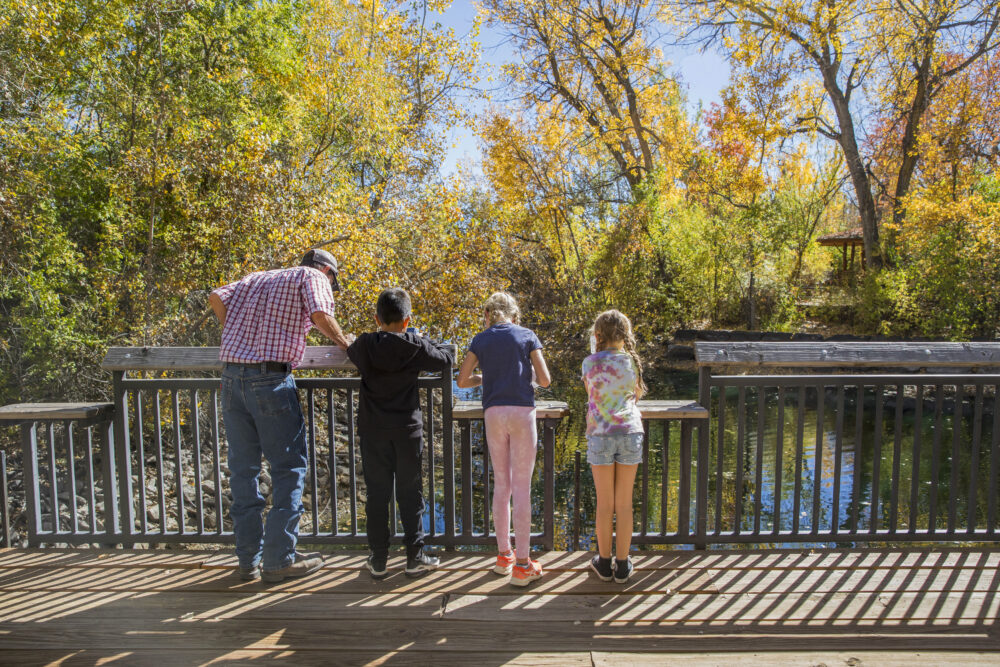We have much more to do and your continued support is needed now more than ever.
Summertime First Aid: Poison Plants
Guest post by Carol Torgan, Ph.D. This article was reviewed by Dr. Joshua Rotenberg, a Texas pediatrician and neurologist.
Porcupines have quills, jellyfish have tentacles, and roses have thorns. The plants and animals we often encounter in nature have a wondrous variety of ways to protect themselves from intruders, and sometimes these natural defenses can take the fun out of an outdoor adventure.
Poison ivy, poison oak, and poison sumac are great examples of this phenomenon. Learn what to do if your explorations lead to some close encounters of the wrong kind, so your family comes home with great memories but not great rashes!
How do poison plants cause rashes?
“Leaves of three, let it be.” But what if someone in your family did not let it be?
Poison ivy, poison oak, and poison sumac all contain the same culprit: an oil called urushiol. The oil is released from the leaves when they are brushed against.
Accidental contact with the plant can leave oil on your child’s skin that can cause redness within hours, or, more typically, several days later. Blisters usually form next. There may be swelling, and the skin can itch like crazy. After about a week, the blisters will start to dry up and the rash will start to fade away.
What are the best ways to treat the rash (and calm the itching)?
1. Wash Off: If your child comes in contact with the plants, wash the affected skin right away with plain water and soap or a special cleaner like Technu to remove the oil. Several good squirts from a water bottle can work wonders, if running water is not immediately available.
2. Take a Shower: Then, have your child take a shower with soap when possible. Skip a bath, as the oil can spread to other areas of your child’s body through the bath water.
3. Be Vigilant: Wash anything that might have come in contact with the plants, including your dog, shoes, garden tools, and sporting and camping equipment, as the oil can remain active for a long time and can be picked up by touching contaminated items.
4. Tame the Itch: If the itching continues, try cool showers, calamine lotion, and/or a cortisone cream. An anti-histamine tablet, such as Benadryl, can ease itching and redness.
Are poison plants contagious?
When you had poison ivy as a child, did you run around and try to rub your rash on your kid sister? A common myth is that the rash or the fluid in the blisters is contagious, as the rash can seem to spread over time. But this is untrue – the spreading is a delayed reaction from the initial contact with the oil. However, you can get a rash if the plant’s oil gets on a pet’s fur, clothing — even garden tools — and then touches your skin.
How do I avoid coming into contact with these plants?
If your family might be around the plants, wear long sleeves, pants, and boots. You can also apply a product before you head out the door that contains bentoquatum (such as IvyBlock) that helps prevent urushiol from penetrating the skin.
It’s a good idea to learn how to identify these plants and to try to avoid areas where they exist.
 1. Poison ivy has the characteristic “leaves of three” with the middle leaflet having a longer stalk than the two on the sides. The leaves are reddish and shiny in spring; green in summer; and yellow, orange, or red in the fall. Poison ivy grows as vines or low shrubs and can be found throughout the U.S.
1. Poison ivy has the characteristic “leaves of three” with the middle leaflet having a longer stalk than the two on the sides. The leaves are reddish and shiny in spring; green in summer; and yellow, orange, or red in the fall. Poison ivy grows as vines or low shrubs and can be found throughout the U.S.

2. Poison oak also has the characteristic “leaves of three.” It grows as a low shrub in the south-eastern U.S. and in tall clumps or long vines on the Pacific Coast.
 3. Poison sumac typically has seven to 13 leaflets and is a tall shrub or small tree. It grows in standing water and swampy areas. The leaves are orange in spring; green in summer; and yellow, orange, or red in the fall.
3. Poison sumac typically has seven to 13 leaflets and is a tall shrub or small tree. It grows in standing water and swampy areas. The leaves are orange in spring; green in summer; and yellow, orange, or red in the fall.
More Outdoor Safety Tips:
Summertime First Aid: Jellyfish stings.
Protect your family from the sun’s UV rays.
Carol Torgan, Ph.D. is an award-winning health scientist, e-health strategist, educator and consultant. She is passionate about improving health by encouraging everyone to go outside and experience their five senses in four dimensions. Her Web site, www.caroltorgan.com, addresses the interplay of science, technology, and movement and includes a list of 100+ top play resources.





















